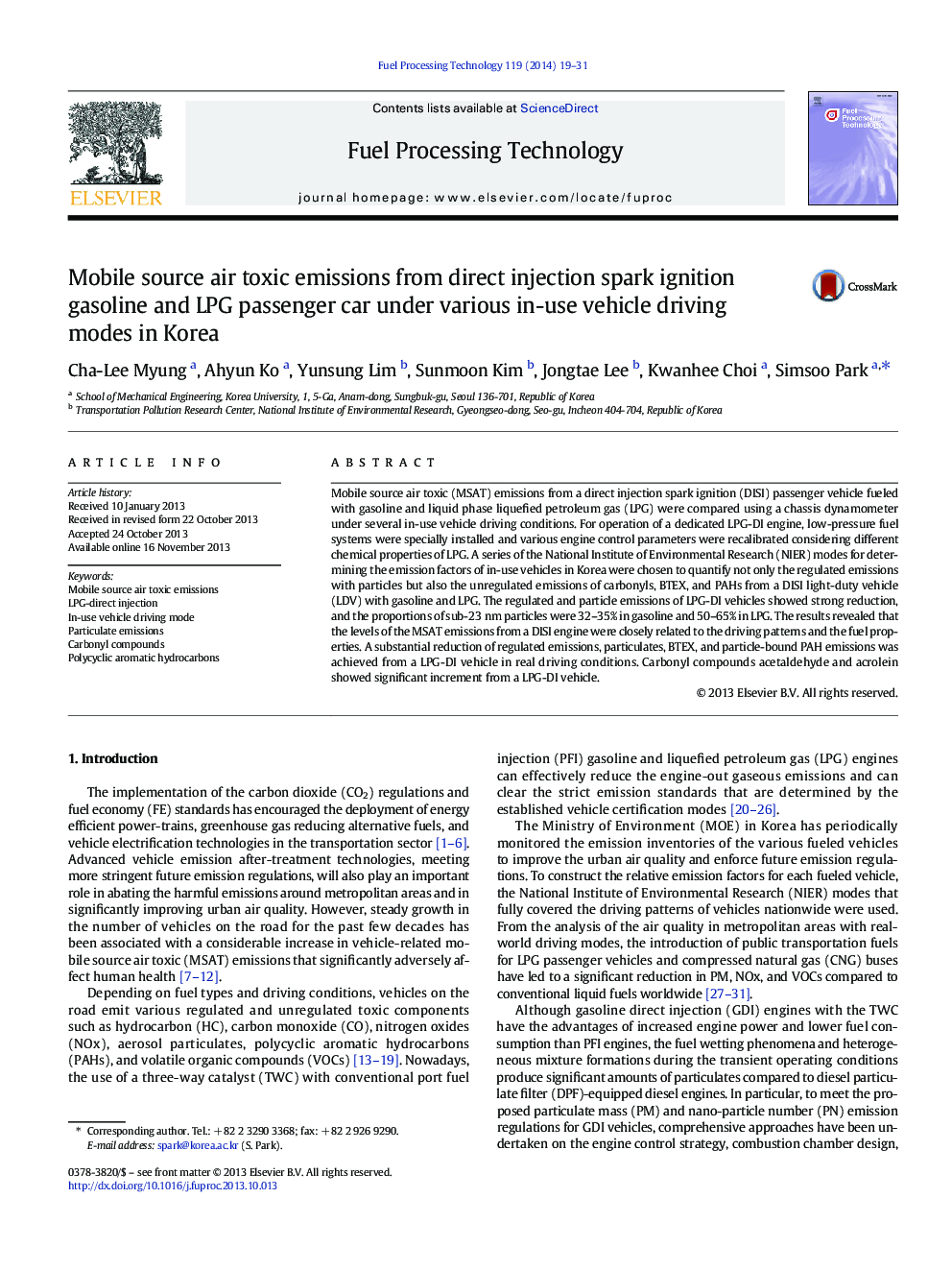| Article ID | Journal | Published Year | Pages | File Type |
|---|---|---|---|---|
| 209873 | Fuel Processing Technology | 2014 | 13 Pages |
•Mobile source air toxic emission from GDI and LPG-DI passenger vehicle was compared.•In-use vehicle test modes were assessed for determining real-world vehicle emission.•Regulated, particulate, BTEX, and PAH emissions were strongly reduced with LPG fuel.•Carbonyls from LPG-DI vehicle were significantly increased than those from GDI vehicle.•MSAT emissions were closely related to in-use driving patterns and fuel compositions.
Mobile source air toxic (MSAT) emissions from a direct injection spark ignition (DISI) passenger vehicle fueled with gasoline and liquid phase liquefied petroleum gas (LPG) were compared using a chassis dynamometer under several in-use vehicle driving conditions. For operation of a dedicated LPG-DI engine, low-pressure fuel systems were specially installed and various engine control parameters were recalibrated considering different chemical properties of LPG. A series of the National Institute of Environmental Research (NIER) modes for determining the emission factors of in-use vehicles in Korea were chosen to quantify not only the regulated emissions with particles but also the unregulated emissions of carbonyls, BTEX, and PAHs from a DISI light-duty vehicle (LDV) with gasoline and LPG. The regulated and particle emissions of LPG-DI vehicles showed strong reduction, and the proportions of sub-23 nm particles were 32–35% in gasoline and 50–65% in LPG. The results revealed that the levels of the MSAT emissions from a DISI engine were closely related to the driving patterns and the fuel properties. A substantial reduction of regulated emissions, particulates, BTEX, and particle-bound PAH emissions was achieved from a LPG-DI vehicle in real driving conditions. Carbonyl compounds acetaldehyde and acrolein showed significant increment from a LPG-DI vehicle.
